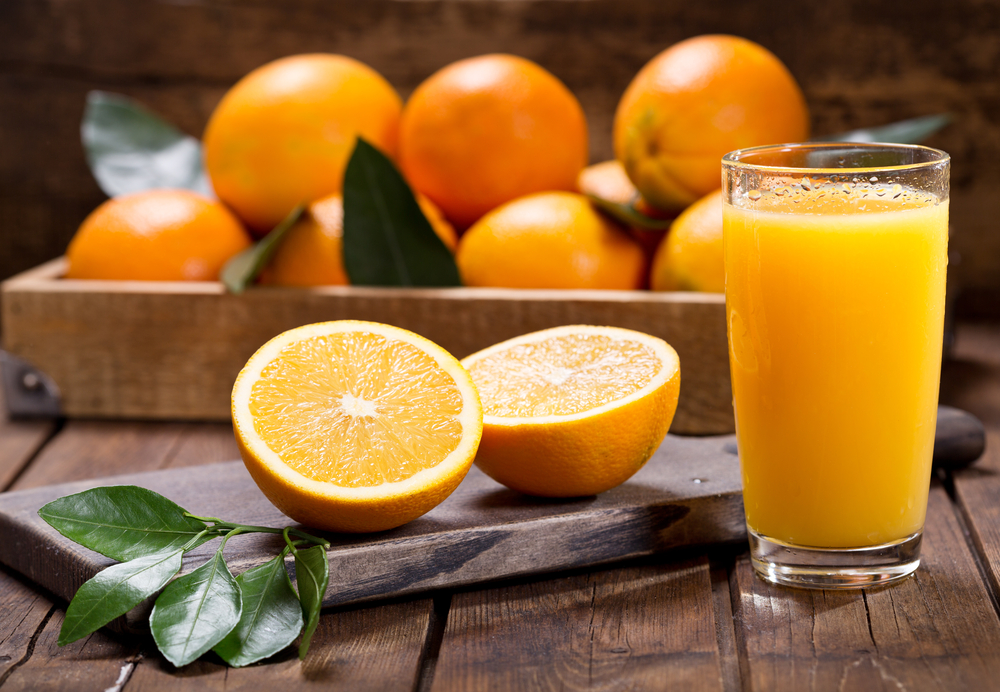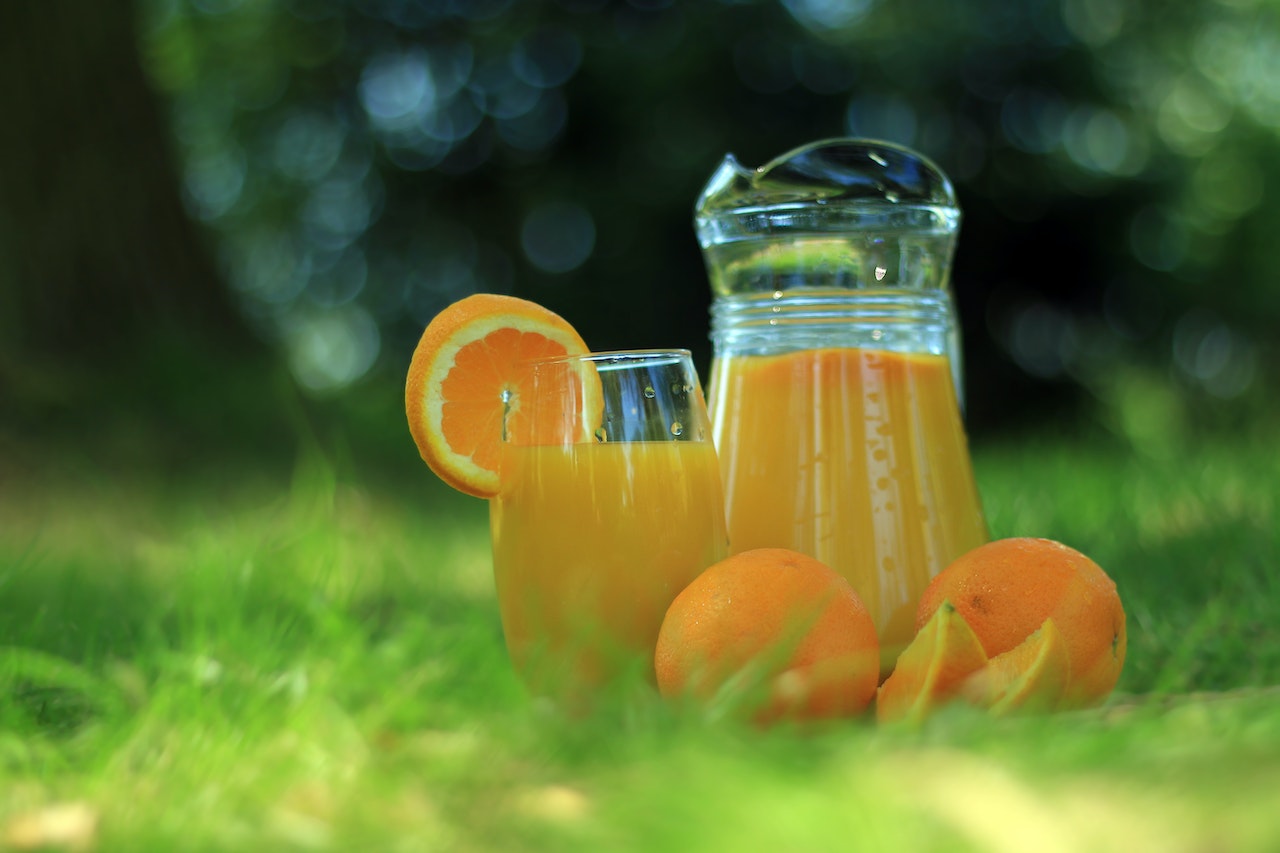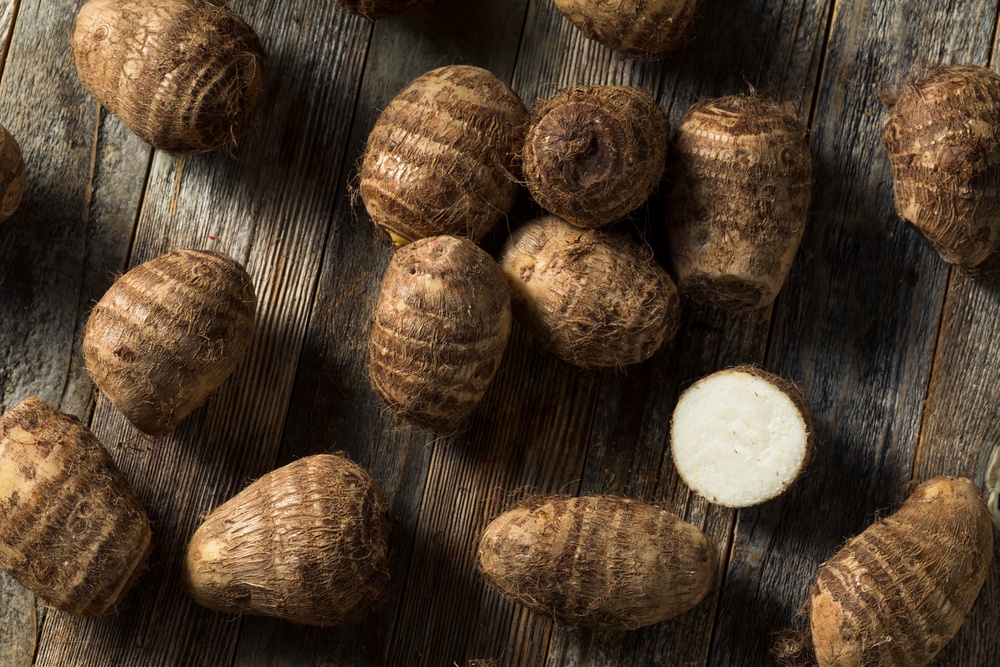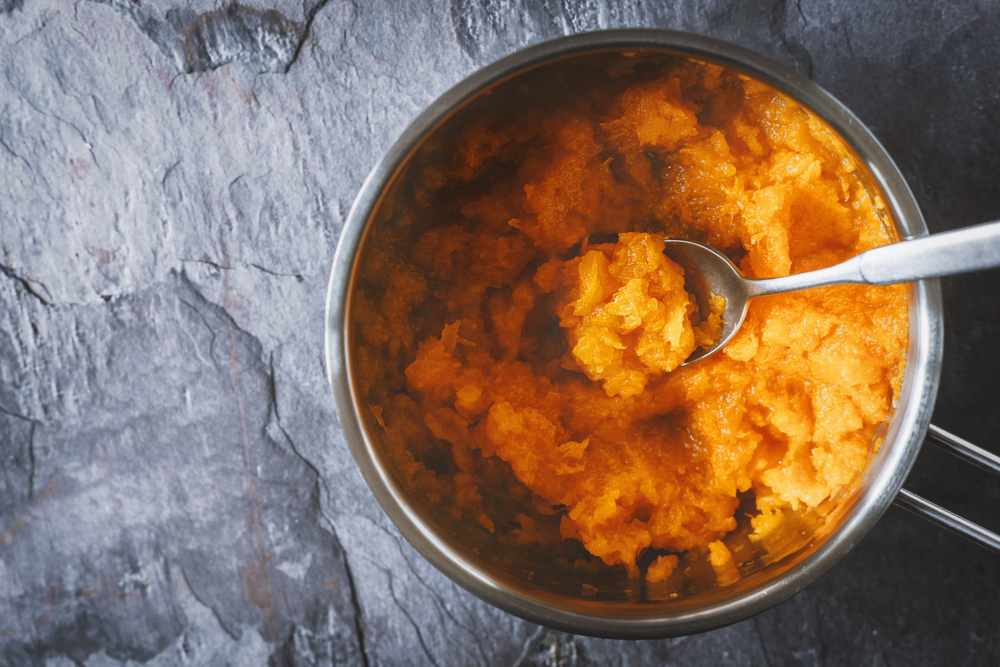I love cooking with butternut squash, and I’m often asked: what does butternut squash taste like? Well, butternut squash has a sweet, nutty flavor that is perfect for a wide range of recipes.
It’s a versatile vegetable that can be used in soups, stews, salads, and even desserts.
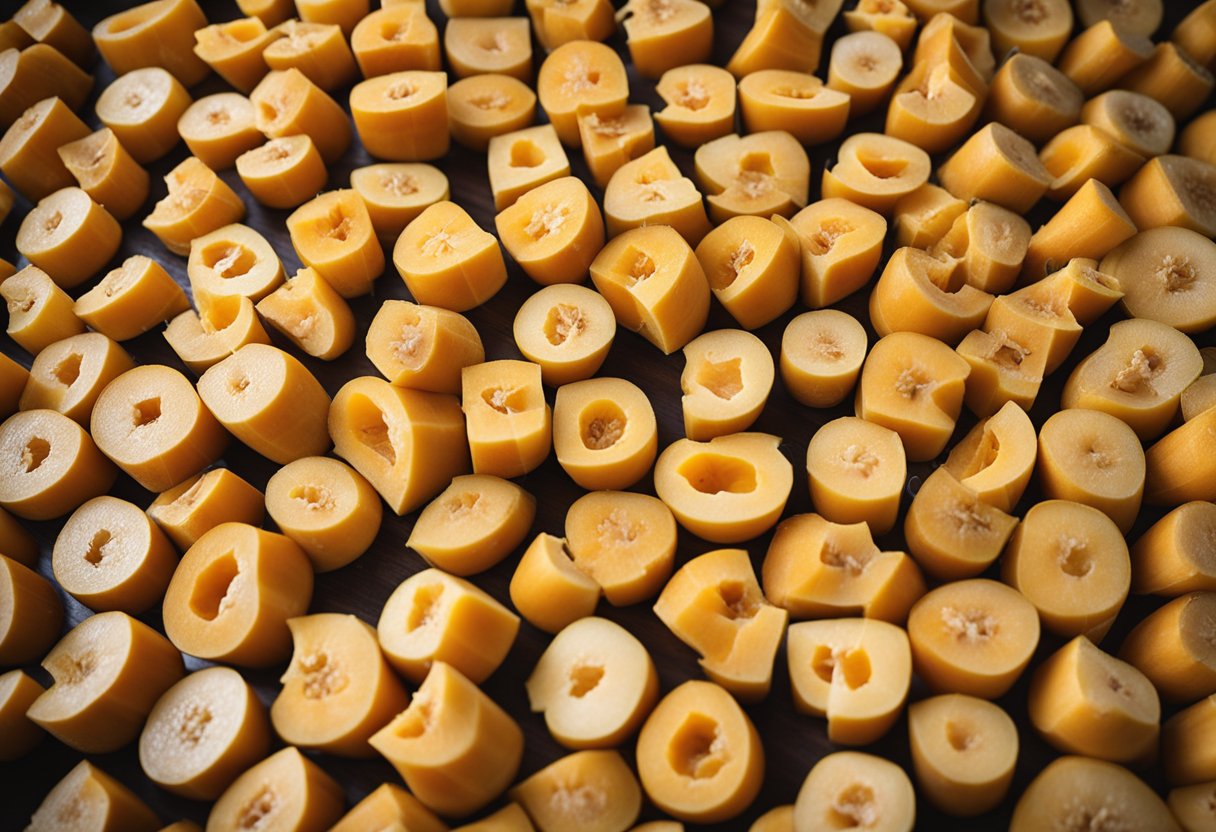
Butternut squash is a type of winter squash that is harvested in the fall. It has a tan, smooth skin and a bulbous shape that tapers at the end.
The flesh is a bright orange color and has a creamy texture. When cooked, butternut squash has a rich, buttery flavor that is slightly sweet and nutty.
Key Takeaways
- Butternut squash has a sweet, nutty flavor that is perfect for a wide range of recipes.
- It is a type of winter squash that is harvested in the fall and has a bright orange flesh with a creamy texture.
- When cooked, butternut squash has a rich, buttery flavor that is slightly sweet and nutty.
Understanding Butternut Squash
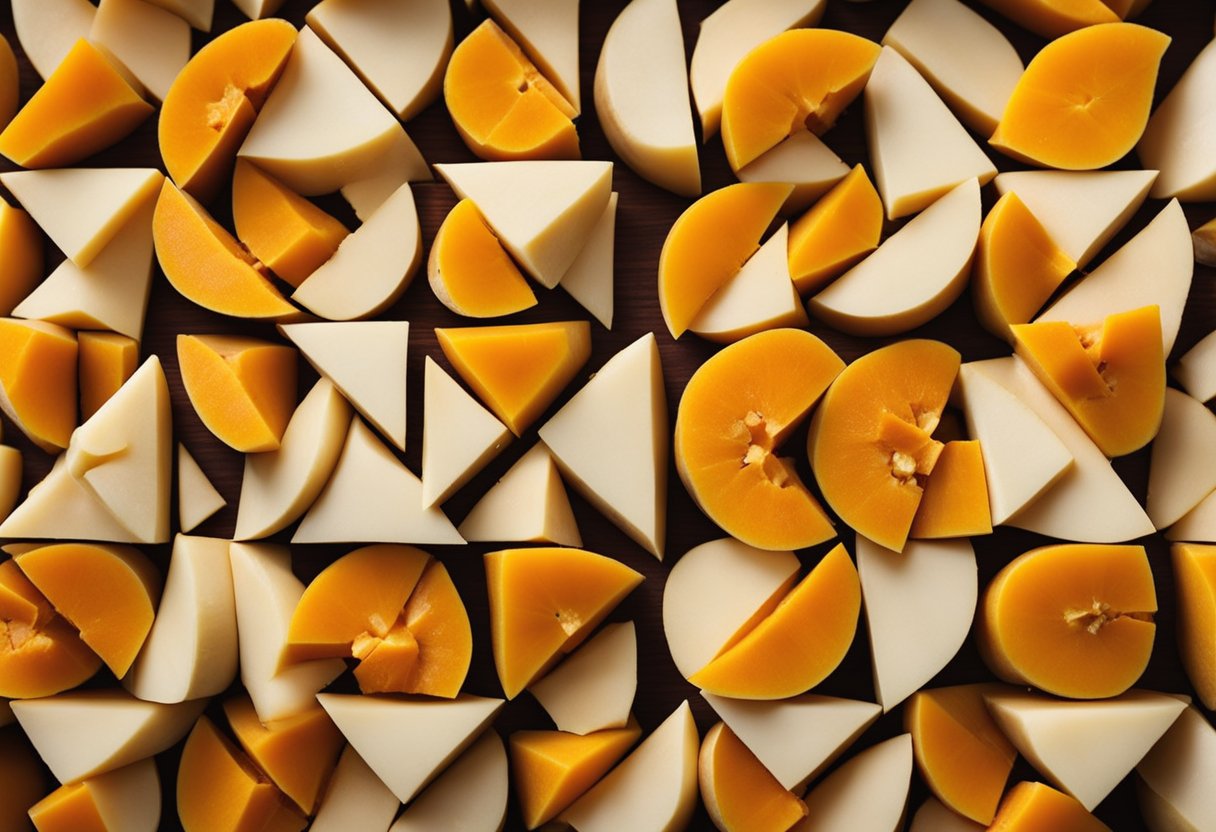
As a food lover and nutritionist, I have tasted many fruits and vegetables, but butternut squash is one of my favorites.
Butternut squash is a type of winter squash that belongs to the Cucurbitaceae family. It is a fruit that is often used as a vegetable in cooking.
Butternut squash has a distinctive shape, with a bulbous bottom and a long, slender neck. The skin is tan and smooth, while the flesh is bright orange.
The size of butternut squash varies, but they can grow up to 15 inches long and weigh up to 3 pounds. The stem of the butternut squash is hard and woody, and it is usually removed before cooking.
Butternut squash is harvested in the fall and winter months when it is fully matured.
It is a versatile ingredient that can be used in many dishes, including soups, stews, casseroles, and curries, as well as sweet ones such as pies, cakes, and muffins.
One of the reasons why I love butternut squash is its taste. It has a sweet, nutty, and slightly earthy flavor that is not overpowering.
The sweetness of butternut squash is one of its most distinctive features. The flesh of the butternut squash is creamy and rich, making it a great substitute for dairy in vegan and lactose-free recipes.
In addition to its delicious taste, butternut squash is also packed with nutrients. It is an excellent source of vitamin A, with just one serving providing enough vitamin A to cover one’s daily needs.
Other benefits associated with this squash are a contribution to weight loss, prevention of cancer, and cold.
In conclusion, butternut squash is a delicious and nutritious fruit that is perfect for fall and winter cooking. With its sweet, nutty, and slightly earthy flavor, it is a versatile ingredient that can be used in many dishes.
Its creamy and rich texture also makes it a great substitute for dairy in vegan and lactose-free recipes.
Taste Profile of Butternut Squash
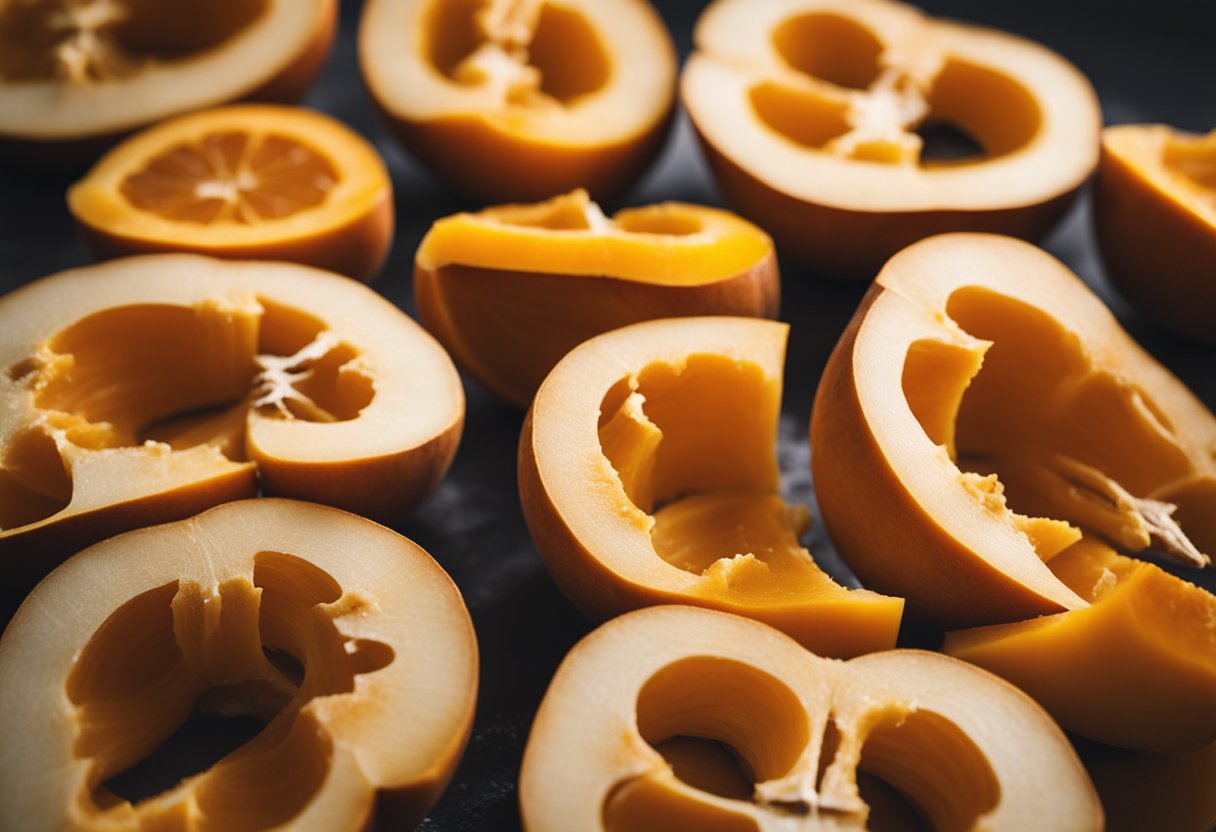
As a nutritionist, I often get asked about the taste of butternut squash. In my experience, butternut squash has a unique flavor profile that is both sweet and nutty, with a mild earthy undertone.
The texture is soft and creamy, making it a great addition to a variety of dishes.
When cooked, butternut squash has a rich flavor that can be enhanced with the addition of spices like cinnamon, nutmeg, and ginger.
It pairs well with other fall vegetables like sweet potatoes and carrots, as well as with meats like chicken and pork.
One of the great things about butternut squash is its versatility. It can be roasted, baked, boiled, or pureed, making it a great ingredient for soups, stews, casseroles, and more.
Its mild flavor also makes it a great substitute for other ingredients like pumpkin or sweet potato.
In terms of nutrition, butternut squash is a great source of vitamins A and C, potassium, and fiber. It’s also low in calories, making it a great option for those looking to maintain a healthy weight.
Overall, the taste profile of butternut squash is unique and delicious, making it a great addition to any meal.
Texture of Butternut Squash
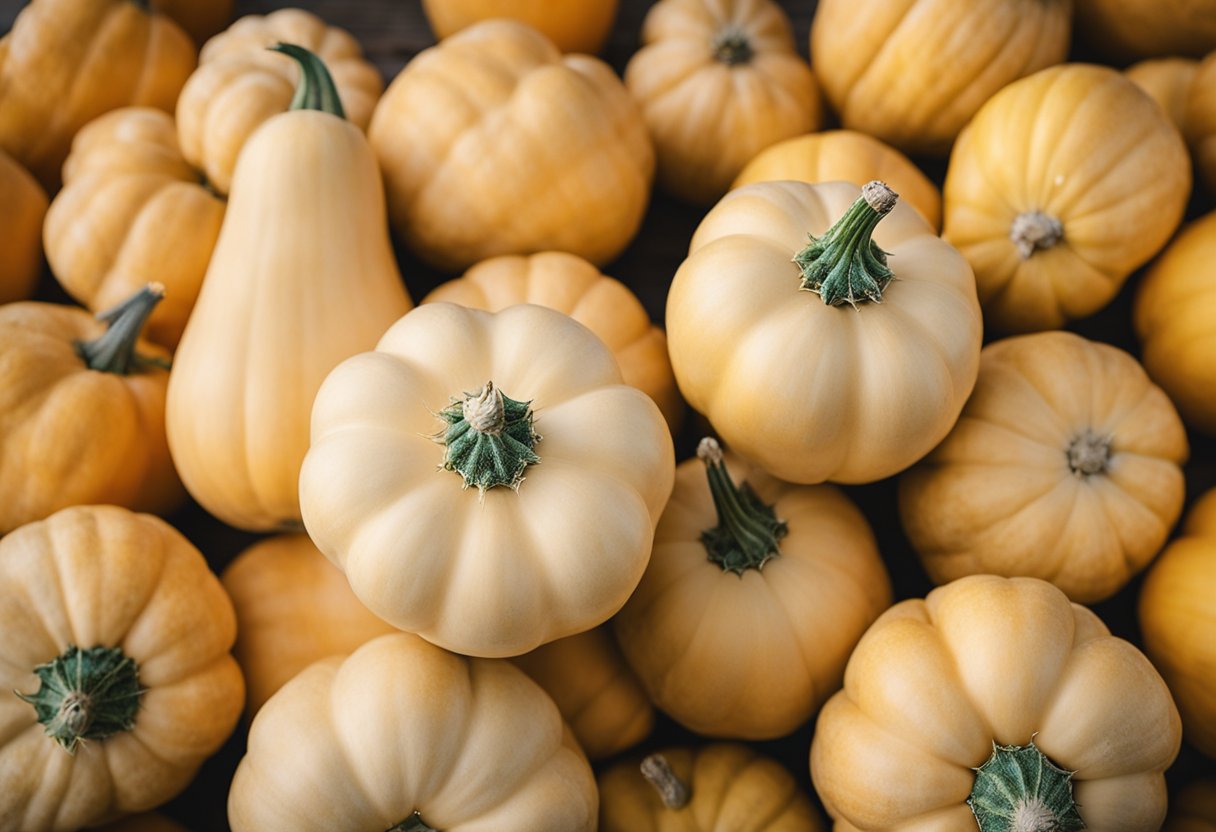
As I bite into a piece of butternut squash, I can feel the soft and smooth texture of the flesh in my mouth. The flesh of butternut squash is creamy and velvety, making it a popular ingredient in soups and stews.
It has a slightly firm texture that holds up well when cooked, but it is not as stringy as other types of squash.
When selecting a butternut squash, look for one that is firm and heavy for its size. The skin should be smooth and free of blemishes.
If the skin is tough, it may be difficult to cut or peel, but the flesh inside should still be soft and tender.
To prepare butternut squash, start by cutting off both ends and then slicing it in half lengthwise. Scoop out the seeds and stringy pulp from the center with a spoon.
From there, you can peel the skin off with a vegetable peeler or leave it on and roast the squash as is.
When cooked, butternut squash becomes even softer and creamier, making it perfect for purees and mashes. It can also be roasted, grilled, or sautéed for a caramelized flavor and crispy texture.
The versatility of butternut squash makes it a great addition to any meal.
Cooking Butternut Squash
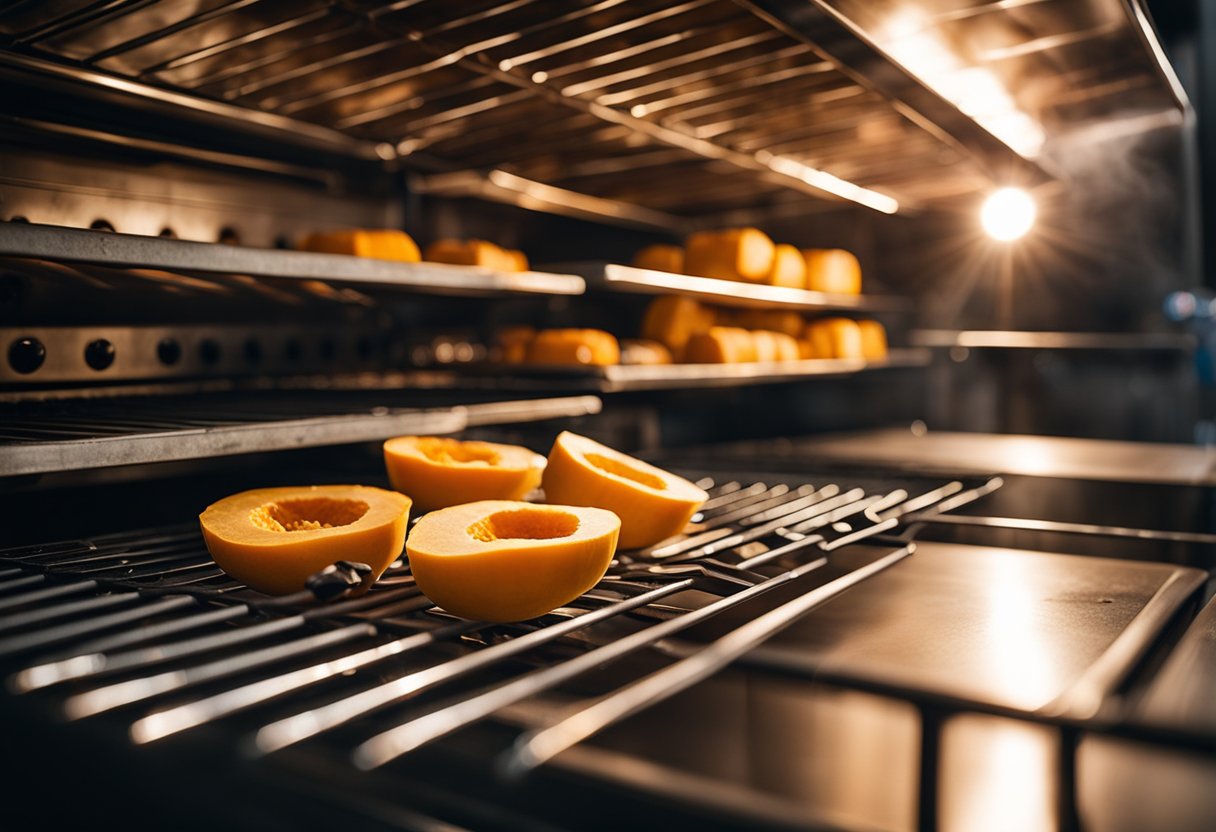
When it comes to cooking butternut squash, there are many ways to prepare it. Some popular methods include roasting, boiling, baking, and pureeing.
Each method can produce different textures and flavors, so it’s important to choose the right one for your recipe.
Roasting is a great way to bring out the natural sweetness of butternut squash. To roast butternut squash, preheat your oven to 400°F.
Cut the squash in half lengthwise and scoop out the seeds. Brush the flesh with olive oil and season with salt and pepper.
Place the squash halves cut side down on a baking sheet and roast for 45-50 minutes, or until the flesh is tender and caramelized.
Butternut squash is also a great substitute for pumpkin in many recipes. You can use pureed butternut squash in pies, muffins, and other baked goods. To make a puree, cut the squash in half lengthwise and scoop out the seeds.
Place the squash halves cut side down on a baking sheet and roast for 45-50 minutes, or until the flesh is tender. Scoop out the flesh and puree it in a food processor or blender until smooth.
Butternut squash is also a great addition to soups and stews. To make a butternut squash soup, sauté onions and garlic in a large pot until softened.
Add diced butternut squash, chicken broth, and seasonings. Simmer until the squash is tender, then puree the soup until smooth.
In summary, butternut squash is a versatile and delicious ingredient that can be prepared in many ways. Whether you’re roasting, baking, boiling, or pureeing it, butternut squash is sure to add flavor and nutrition to your favorite recipes.
Comparing Butternut Squash with Other Squashes

When it comes to winter squashes, there are many varieties to choose from. Some of the most popular ones include pumpkin, acorn squash, delicata squash, buttercup squash, and hubbard squash.
While these squashes share some similarities, they also have distinct differences, including taste, texture, and appearance.
Pumpkin
Pumpkin is a type of winter squash that is often used in pies and other desserts. It has a slightly sweet taste and a bright orange color.
Compared to butternut squash, pumpkin has a more fibrous texture and a slightly less sweet taste. However, both squashes are versatile and can be used in a variety of recipes.
Acorn Squash
Acorn squash is a small, dark green and orange squash with a subtly sweet and nutty taste. It has a slightly firmer texture than butternut squash and is often used in soups, stews, and roasted dishes.
While acorn squash is delicious, it can be harder to work with due to its tough skin.
Delicata Squash
Delicata squash is a smaller winter squash with a yellow and green striped skin. It has a sweet and nutty flavor that is similar to butternut squash.
Delicata squash has a softer texture than butternut squash, making it a great option for purees and soups.
Buttercup Squash
Buttercup squash is a type of winter squash that has a dark green skin and a sweet, nutty flavor.
It has a dense, creamy texture that is similar to butternut squash. Buttercup squash is often used in savory dishes, such as casseroles and curries.
Hubbard Squash
Hubbard squash is a large, dark green winter squash with a sweet and nutty flavor. It has a dense, fibrous texture that is similar to pumpkin. Hubbard squash is often used in soups, stews, and roasted dishes.
In summary, while these winter squashes share some similarities, they also have distinct differences in taste, texture, and appearance.
Butternut squash stands out with its delicate and smooth flavor, which pairs well with aromatic herbs and spices.
Nutritional Value of Butternut Squash
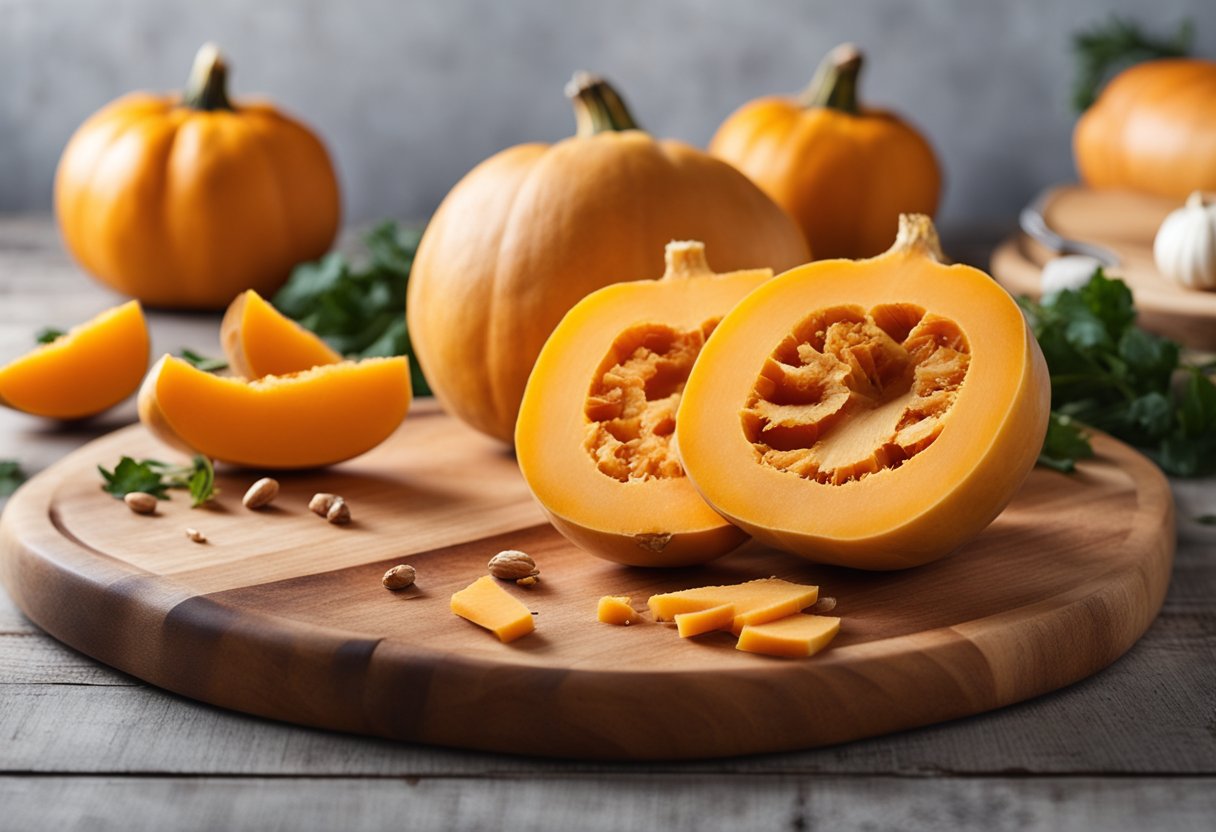
As someone who enjoys cooking and trying new recipes, I always make sure to incorporate nutritious ingredients into my meals.
Butternut squash is one such ingredient that not only adds flavor to dishes but also offers various health benefits.
Butternut squash is a great source of vitamins and minerals, making it a nutritious addition to any diet.
One cup of cooked butternut squash contains 437% of the recommended daily intake (RDI) of vitamin A, which is essential for maintaining good vision, healthy skin, and a strong immune system.
In addition to vitamin A, butternut squash is also a good source of vitamin C, with one cup providing 52% of the RDI.
Vitamin C is a powerful antioxidant that helps protect the body against damage from free radicals and supports a healthy immune system.
Butternut squash is also rich in fiber, which is important for maintaining good digestive health and keeping you feeling full and satisfied. One cup of cooked butternut squash contains 7 grams of fiber, which is about 28% of the RDI.
Despite its sweet taste, butternut squash is relatively low in calories, with one cup of cooked squash containing only 82 calories.
It is also low in fat and sodium, making it a great option for those looking to maintain a healthy weight or reduce their sodium intake.
In addition to its high vitamin and fiber content, butternut squash is also a good source of potassium and other minerals.
Potassium is important for maintaining healthy blood pressure and supporting proper muscle and nerve function. One cup of cooked butternut squash contains 582 mg of potassium, which is about 16% of the RDI.
Overall, butternut squash is a nutritious and delicious ingredient that can be used in a variety of dishes.
Its high vitamin and fiber content make it a great option for supporting a healthy immune system and maintaining good digestive health.
Incorporating Butternut Squash in Recipes
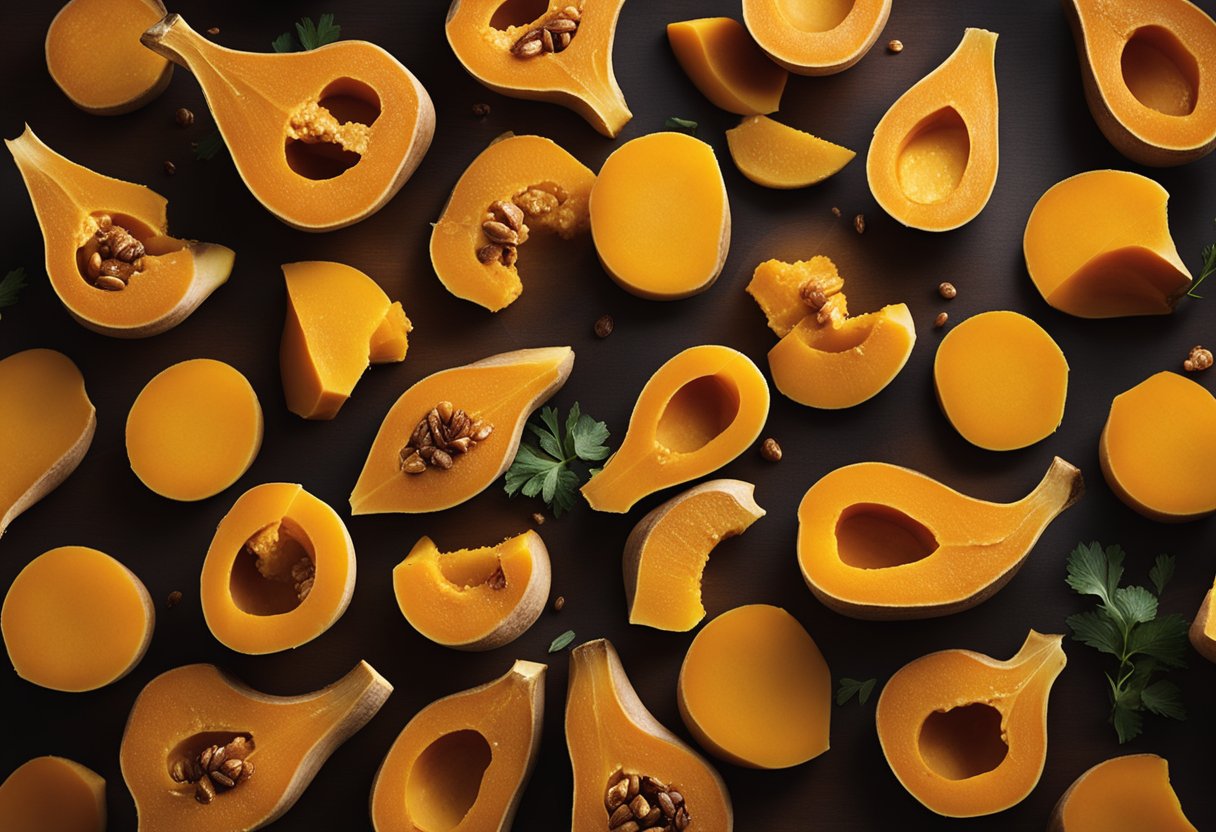
I love using butternut squash in my recipes because it is such a versatile ingredient.
It can be used in both sweet and savory dishes, and it pairs well with a variety of other flavors. Here are some ideas for incorporating butternut squash in your recipes:
Roasted Butternut Squash
Roasting butternut squash is one of the easiest ways to prepare it. Simply cut the squash into cubes, toss with olive oil, salt, and pepper, and roast in the oven until tender and caramelized.
You can also add other spices like cinnamon, nutmeg, or brown sugar for a sweeter flavor.
Butternut Squash Soup
Butternut squash soup is a classic fall dish that is both comforting and delicious. To make it, sauté onions and garlic in butter or olive oil, add cubed butternut squash, and cover with chicken or vegetable broth.
Simmer until the squash is tender, then blend until smooth. You can also add cream, herbs, or spices like nutmeg or cinnamon for extra flavor.
Butternut Squash Casseroles
Butternut squash works well in casseroles, both savory and sweet. For a savory casserole, mix cooked butternut squash with cooked pasta, cheese, and other vegetables like carrots or potatoes.
For a sweeter casserole, mix butternut squash with brown sugar, cinnamon, and nutmeg, and top with a crumbly topping made from flour, butter, and sugar.
Butternut Squash Side Dishes
Butternut squash makes a great side dish for any meal. You can simply roast it with salt, pepper, and olive oil, or you can add other flavors like herbs, spices, or cheese. It also pairs well with other vegetables like carrots or sweet potatoes.
Overall, butternut squash is a great ingredient to have on hand because it is so versatile and easy to work with. Whether you’re making a sweet or savory dish, butternut squash is sure to add flavor and nutrition to your meals.
Storing Butternut Squash
As a winter squash, butternut squash can last for several months if stored properly. Here are some tips on how to store butternut squash:
- Store in a cool and dry place: Butternut squash should be stored in a cool and dry place, such as a pantry or basement. The ideal temperature for storing butternut squash is between 50°F and 60°F. Do not store in a damp or humid place, as this can cause mold to grow on the squash.
- Avoid direct sunlight: Butternut squash should not be exposed to direct sunlight, as this can cause it to ripen too quickly and spoil.
- Do not refrigerate: Butternut squash should not be refrigerated, as this can cause the squash to spoil faster. Instead, store it in a cool and dry place as mentioned above.
- Handle with care: Butternut squash has a hard outer shell, but it can still be easily damaged. Be careful when handling the squash, and avoid dropping it or hitting it against hard surfaces.
- Check for mold: Check your butternut squash regularly for any signs of mold. If you notice any mold, discard the squash immediately.
By following these tips, you can ensure that your butternut squash stays fresh and delicious for several months.
Common Questions About Butternut Squash
As someone who enjoys cooking with butternut squash, I often get asked several questions about this winter squash. Here are some of the most common questions I get asked:
Is Butternut Squash Good for You?
Yes, butternut squash is considered a healthy food. It is low in calories and high in fiber, vitamins, and minerals.
It is an excellent source of vitamin A, which is important for healthy vision, immune function, and skin health. It also contains vitamin C, potassium, and magnesium.
Does Butternut Squash Have a High Water Content?
Butternut squash has a moderate water content, which is about 88% by weight. This means that it can help keep you hydrated, but it may not be as juicy as other fruits and vegetables.
Is It Hard to Cut Butternut Squash?
Cutting a butternut squash can be challenging because of its tough skin and shape. However, there are a few tricks to make it easier.
First, use a sharp knife to cut off the top and bottom ends of the squash. Then, cut the squash in half lengthwise.
Scoop out the seeds and fibers with a spoon. Finally, cut the halves into slices or cubes. Alternatively, you can roast the squash whole and then cut it into pieces.
Does Butternut Squash Taste Bad?
No, butternut squash does not taste bad. In fact, it has a sweet, nutty flavor that is often described as similar to pumpkin or sweet potato.
It is a versatile ingredient that can be used in both savory and sweet dishes. Some people may not like the taste or texture of butternut squash, but it is generally well-liked and a popular winter squash.
Frequently Asked Questions
How can I cook butternut squash on the stove?
To cook butternut squash on the stove, you can start by peeling and cutting the squash into cubes. Then, heat up a pan with some oil or butter and add the squash. Cook the squash on medium heat for about 15-20 minutes or until it’s tender. You can also add some seasoning like salt, pepper, and herbs to enhance its flavor.
What are some easy butternut squash recipes?
There are many easy butternut squash recipes you can try, such as roasted butternut squash, butternut squash soup, butternut squash risotto, and butternut squash pasta. You can also use butternut squash as a healthy substitute for potatoes in dishes like mashed butternut squash or butternut squash fries.
What does spaghetti squash taste like?
Spaghetti squash has a mild, slightly sweet taste and a stringy texture that resembles spaghetti noodles. It’s often used as a low-carb substitute for pasta in dishes like spaghetti squash carbonara or spaghetti squash lasagna.
What is the most flavorful squash?
The most flavorful squash is subjective and depends on personal preference. However, some popular flavorful squash varieties include butternut squash, acorn squash, kabocha squash, and delicata squash.
What is butternut squash similar to?
Butternut squash is similar to sweet potatoes in taste and texture. It has a creamy, delicate flavor with a hint of sweetness and a smooth, velvety texture when cooked.
Does butternut squash taste like pumpkin?
Butternut squash and pumpkin have similar flavors, but butternut squash is less sweet and has a milder taste. However, they can be used interchangeably in recipes that call for pumpkin puree.



